
Share the post "From the Arab uprising to Shahbag: New Media and Socio-Political Protests"
On December 17 2010, the self-immolation of Mohammed Bouazizi, a vegetable seller of provincial Tunisian city of Sidi Bouzid, prompted a political upheaval that became one-of-a kind and monumental. Starting from Tunisia, the uprising animated the polities of Egypt, Syria, Libya, Bahrain, Yemen and Algeria. The protests were border-transcending, tech savvy youth-centric, non-violent and often, leaderless. The regimes were caught by surprise by the enthusiastic participation of people from all segments of society. The tide of protests that swept through the Middle East and North Africa highlighted the discrete role of new media, or internet based social networks and new Information Communication Technologies.
The “Arab Spring” pointed to a phenomenon of new forms of sociopolitical protest, particularly about their organizational and communication-related aspects. This new kind of protest gets its momentum not only in Arab Spring but also in some of the movements in South-East Asia and Latin America. In this very moment, this type of new media generated movement is going on in Shahbag of Bangladesh which started in last February 5 to demand capital punishment for Jamaat-e-Islami’s Assistant Secretary General and war criminal Abdul Quader Molla, who was awarded life imprisonment for committing crimes against humanity during the War of Independence of Bangladesh in 1971.
From Arab Spring to Shahbag, although demands are different and diverse, it is very clear that the new media enable more people to express their opinions and facilitate to bring together dispersed individuals, who share a common interest or opinion and hence, enhance opportunity for strengthening democratic culture. New media is a broad term that first emerged in the 1960s and widely used and captured attention since the late 1980s. This term refers to a wide range of changes in media production, distribution and use. These changes are not only technological but also ‘textual, conventional and cultural’. New media refers to on-demand access to content anytime, anywhere, on any digital device. It also means interactive user feedback, creative participation and community formation around the media content. The democratisation of creating, publishing, disseminating and consuming media content, generated in real-time is the most unique features of new media. Most technologies described as ‘new media’ are digital, often having characteristics of being manipulated, networkable, dense, compressible, and interactive. Some examples may be the Internet (websites, social networks, blogs etc.), computer multimedia, video games, CD-ROMS, and DVDs. Social networks like facebook, Twitter, MySpace, and LinkedIn are important examples of new media, in which most users are in fact content creators.
An important aspect of new media is about the new experiences of the relationship between embodiment, identity and community. New media induce a shift in the personal and social experience of time, space, and place that have implications for the ways in which we experience ourselves and our place in the world. Even new media create a challenge to make distinctions between the real and virtual and between the human and artificial. In terms of organization and production, new media made a wider realignment and integrations in media culture, industry, economy, access, ownership, control and regulation.
The role of Information and Communications Technologies and media formats in constituting political life is an important aspect of the contemporary world. In the modern era, media’s role in making politics and society visible, in providing information, analysis, forums for debate, a shared civic culture in short, a public sphere is beyond dispute. They appear ubiquitous and continue to expand. Certainly, the media have been instrumental in globalizing the normative vision of democracy. The media are an integral part of our contemporary reality, a major historical force. More importantly, democracy would be very unrecognizable without the media of communication. As Habermas reminds us in The Structural Transformation of the Public Sphere, the determining figures of the liberal democratic tradition shared the conviction that the long-term legitimacy and stability of representative government would depend upon the capacity of an active and informed citizenry to sustain open, rational deliberation about crucial issues of their day. This expectation of developing a vibrant citizenry formed the cornerstone for theoretical formulations about the legitimacy of representative government and popular ideals about democracy. In this contemporary world, it is undoubted that new media are the most crucial platforms from where ‘an active and informed citizenry’ can be evolved.
The fact that tools of social networking, that have previously had a reputation only for socialising, are now being used as sources of information and data. If we observe the use of internet pattern in Arab or Shahbagh uprisings, it is very clear that people switch their interest for more political engagement than any other interests do when it seems necessary to them. Along with the many discussion groups in the civic and political domain, thousands of NGOs, organised social movements, lobby groups and political activists made use of the facilities of new media. Thus, cyberspace is becoming a vital link and meeting ground for a civically engaged and politically mobilized stratum of the polity and thus fostering the emergence of multiple mini-public spheres.
Some political scholars, academics and journalists have embraced new media, especially social networks, as undeniable forces for change, claiming that, “democracy is just a tweet away,” or as the Egyptian Google executive Wael Ghonim famously said, “If you want to free a society, just give them the Internet.” According to the 2011 Arab Social Media Report, 94% of Tunisians get their news from social media tools, as do 88% of Egyptians. “Both countries also relied the least on state-sponsored media for their information (at 40% and 36% of people in Tunisia and Egypt respectively).” Equally noteworthy, in Egypt there are now more users of facebook than subscribers to newspapers. In addition to Twitter, facebook, and YouTube, personal blogs have been used as an insider perspective to the ongoing revolutions.
Like Arab Uprising, new media played a crucial role to organize the protest of Shahbagh. This movement was called by a small network of online activists and bloggers. According to them, the verdict given by International Tribunal does not reflect the people’s sentiment of Bangladesh. With massive campaign in facebook and various blogs, thousands people pour into a busy intersection, namely Shahbagh, of the capital city and have been holding vigils. Besides creating a provision for an appeal for state party, the massive gathering also demands for a ban on a political party- Jamaat-e-Islami Bangladesh- for involvement in the genocide of 1971. People from all walks of life, with students, doctors, teachers, actors and even sports personalities have been taking part in this protest.
This is one of the remarkable protests, even some say ‘the largest’ protest in the country’s history. Interestingly, this one is also the first major uprising triggered by new media. Before Shahbagh, these online bloggers arranged some small protests like the protest against the fire in Tazrin Garments which killed hundreds of garment workers. It is very clear that Shahbagh uprising is not happened all of a sudden as the online activists have been preparing themselves with active participation in their virtual world for a long time. Blogs and social media saw fiery debate on issues like BDR tragedy, communal killing in Ramu, border killing by BSF or government’s plan to build a new airport in Arial bil. Moreover, trial of war criminals and banning the Islamists are two hot issues those have been discussed over and over in the blogsphere for last six or seven years. So, it is not a surprise that this whole uprising is led by bloggers and they became contemporary ‘national heroes’ of Bangladesh.
The protest started by forming various facebook groups and pages against the verdict made for Quader Mullah. Within two days these groups and pages got thousands of memberships. The protesters are calling it as ‘cyber war’ against the supporters of war criminals. Even though the YouTube is thoughtlessly banned in Bangladesh, social media like facebook is playing a vital role as a medium to organize the protest by thousands of video, photo, note and status posts. In contrast to them, supporters of war criminals and Jamaat also created numerous facebook groups and pages to manipulate support for them. Groups like ‘Basherkella’ , ‘Faraeji Andolon’ and ‘Converse News’ posted various fabricated news and posted fake photos with a little help of Photoshop to undermine the uprising against the war criminals. To stop this manipulation, government is compelled to shut down some of their websites.
The cyber war is heightened when an organizer and blogger, Rajib Haider, was slain. The family members and protesters of Shahbagh claimed that he was killed by the supporters of war criminals for participating in Shahbagh uprising. On the other hand, using social media and newspapers, supporters of Jamaat tried to emphasize the atheist and anti-Islam contents of his blog. As religion is still very sensitive issue in Bangladesh, a country of majority Muslim population, they tried to brand the Shahbagh uprising as an initiative of atheists. Conversely, the supporters of the uprising also tried to establish their point that this uprising is a combined effort of people from all walks of life with their different views, opinions and beliefs about religion.
The case of Arab Spring and Shahbagh is very different. It is clear that the influence of new media as catalyst for sociopolitical protests varies significantly from one political context to another. Moreover, ‘the media do not function as a unified societal force, but as a complex set of institutions. They are shaped by internal organizational features as well as by external societal conditions.’ As societal conditions are different, the outcome these protests differ greatly from country to country. In the case of Arab spring, regimes toppled but not always in an expected way. In Shahbagh, the war is still going on. Until now, the protest created a major impact on the political and societal landscape of Bangladesh. The youth of Bangladesh made their point very clear that they will not forgive any kind of leniency regarding the issue of war crime. This protest is also a strong signal of rejection and frustration towards the existing corrupted politics of major two political parties. Whether this protest will ultimately set a path to bring a qualitative change in politics of Bangladesh is a crucial question to consider. However, the developments from Arab uprisings to Shahbagh made it obvious that no region, state, or form of government can remain immune against the kind of movements that put faith in new Information and Communication Technologies.
First Published in The Daily Star on 23rd February, 2013.
http://www.thedailystar.net/newDesign/news-details.php?nid=270115
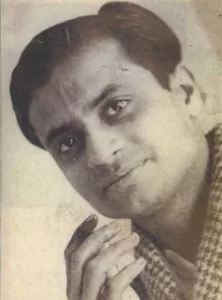
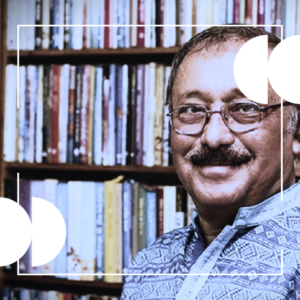
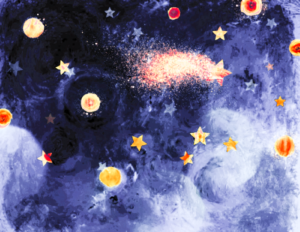
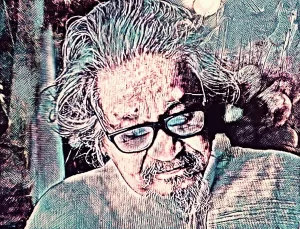
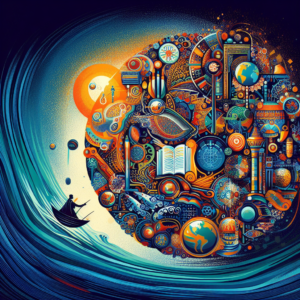
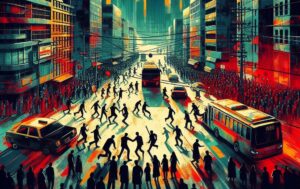
Thanks a lot for extending this useful analysis on the comparison of Arab Spring and the Shahabag uprising. As is common for all uprising, they are born from some shared sense of injustice among the common people. In most cases the target of such protest is an authoritarian regime or an upfront injustice inflicted by them. However, here the essense of the protest is very unique from that perspective. Firstly, it seeks to address the inadequacy of the state machinery (and to that effect the ruling party) to deliver justice. Secondly, the main opposition party’s indifference to the quesion of crimes against humanity during 1971 is strongly criticized here. This is an important message to the opposition party. And thirdly, the firm position of the protest against the party with direct ideological and battlefield opponent of the war of independence is significant. This feature of non-parisanism , perhaps, is the single most unique character of the Shahabag uprising. However, we don’t have to forget that the participants despite some very clear shared positions are not homogenous in other aspects. As such we can reasonably expect a dynamic organic path of development of this process.
The dynamic, unique, non-partisan and spontenous nature of the uprising germinates the hope and possibility that in moments of necessity citizens of the country can combine their energy against any form of injustice. To my opinion this is the overarching achievement of the Shahabag uprising. Apart from the important issue of justice of crime against humanity, this useful message should create an awareness among the political parties of the latent energy of public uprising, which the ruling parties have been apparently discounting. If we can expect certain degree of sensibility of the parties we can expect that a better delivery of accountability will be in order in the near future.